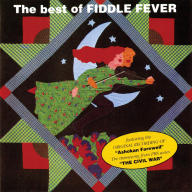The impetus for Fiddle Fever was sparked when the five musicians came together in New York's Greenwich Village. The band represented the meeting of five top-ranked modern bluegrass players. Unger (fiddle, mandolin) and Stover (fiddle, viola) had been members of David Bromberg's late-'70s band. Glaser (fiddle, piano), who was equally as skilled at Bill Monroe-style bluegrass as he was at Django Reinhardt-inspired swing, had played with the Central Park Sheiks. Barenberg (guitar, fiddle, percussion, mandolin) had played with Country Cooking, and had previously worked with Glaser in the New York All-Stars and Breakfast Special. Joined by banjo player Tony Trischka, Barenberg and Glaser formed a short-lived newgrass group, Heartlands, in 1977.
Despite its potential, Fiddle Fever was together for a brief four years, disbanding shortly after Barenberg moved to Nashville. Glaser went on to become the chairman of the string department of the Berklee College of Music in Boston. Unger and Mason, who later married, continued to perform together as a duo.
Fiddle Fever had its greatest exposure seven years after they split up, when their recording of Unger's instrumental "Ashokan Farewell," from their second album Waltz of the Wind, was featured as the theme song of the Ken Burns PBS documentary The Civil War in 1991. The tune was inspired by the fiddle and dance workshops conducted by members of the group at the Ashokan camp in New York's Catskill Mountains. ~ Craig Harris, Rovi












